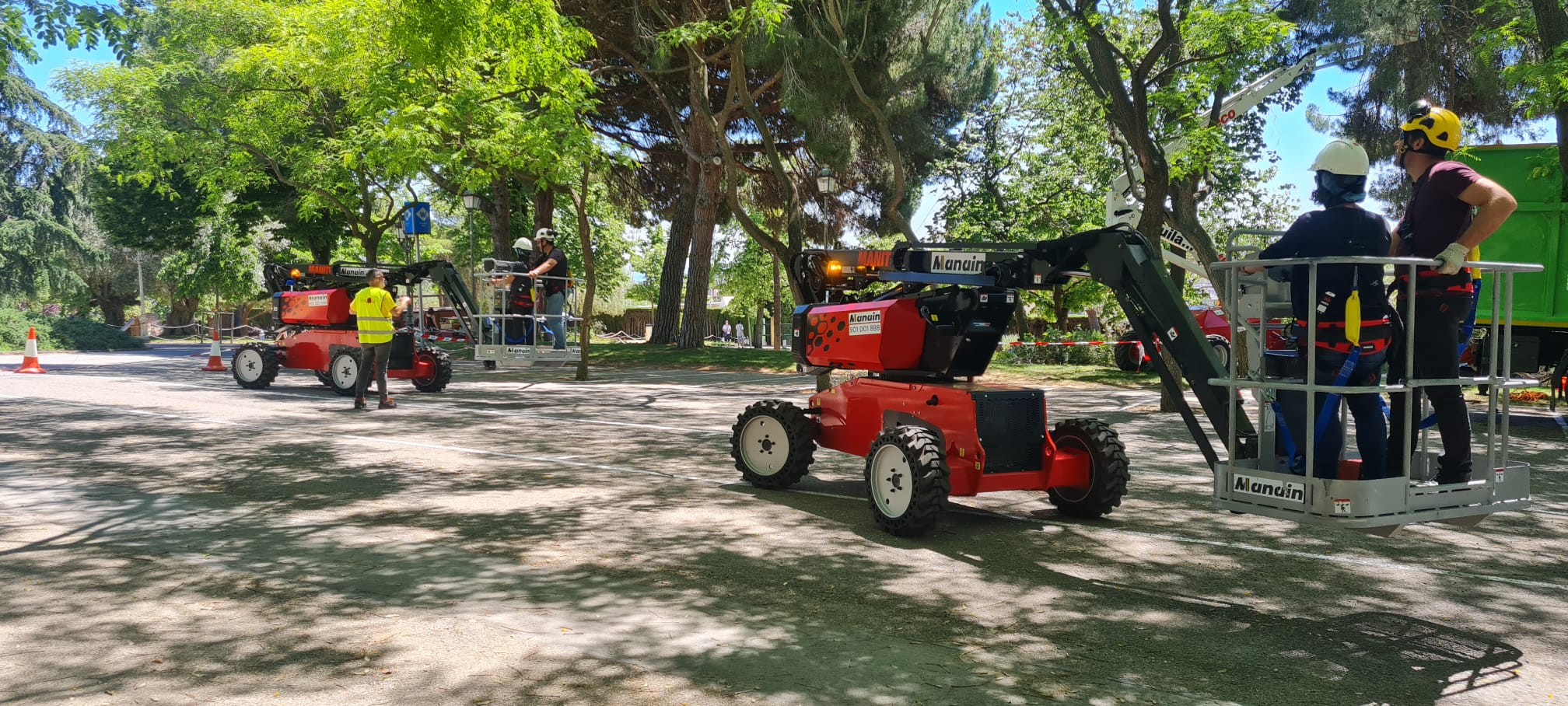Tracked and self-propelled aerial lifts: reaching heights with efficiency
When it comes to working at heights, choosing the right lifting platform can make the difference between efficiency and safety. Two popular options that stand out in this field are crawler elevating platforms and self-propelled platforms. Both serve the purpose of providing safe access to elevated areas, but their differences in design and functionality can influence the choice depending on the specific needs of the project.

How crawler elevating platforms work:
Crawler elevating platforms are machines designed to operate on rough terrain and adverse conditions. Their operation is highlighted by:
- Stability on uneven ground: The most distinctive feature is the presence of tracks instead of wheels. This provides a stable base that minimizes the risk of tipping over on uneven ground, soft soils, or steep slopes.
- Optimal traction: The tracks offer superior traction, allowing the platform to move safely on slippery or unstable surfaces. This capability is essential in areas where soil conditions are unpredictable.
- Vertical and lateral reach: Crawler platforms often offer impressive lifting capacity and considerable lateral reach.
- Maneuverability on terrain: The combination of stability and traction allows these platforms to maneuver efficiently on difficult terrains, improving accessibility in remote or rural locations such as on earthworks or construction sites.
Agility on paved surfaces with self-propelled platforms:
On the other hand, self-propelled elevating platforms are designed to operate on paved or stabilized surfaces. Their operation is characterized by:
- Maneuverability in tight spaces: The ability to move swiftly and the more compact design of self-propelled platforms make them ideal for working in narrow spaces, such as warehouses, industrial halls, or urban environments.
- Speed and efficiency: These platforms tend to be faster than crawler elevating platforms, which allows users to cover more ground in less time.
- Ideal for urban settings: Their ability to move quickly and maneuver around obstacles makes them ideal for use in busy urban environments with limited access or restricted spaces.
Which platform should you choose?
Choosing the ideal platform depends on various factors such as terrain, space limitations, and specific project needs. In general, if you need to work on rugged terrain or in more difficult conditions, a crawler elevating platform is a safer and more effective option. However, if the work requires mobility, speed, and maneuverability in tight spaces, a self-propelled platform is the better choice.
Both platforms have their advantages and drawbacks, so the most important thing is to consider the particular requirements of the job and choose the one that guarantees both safety and performance in the best way possible.




